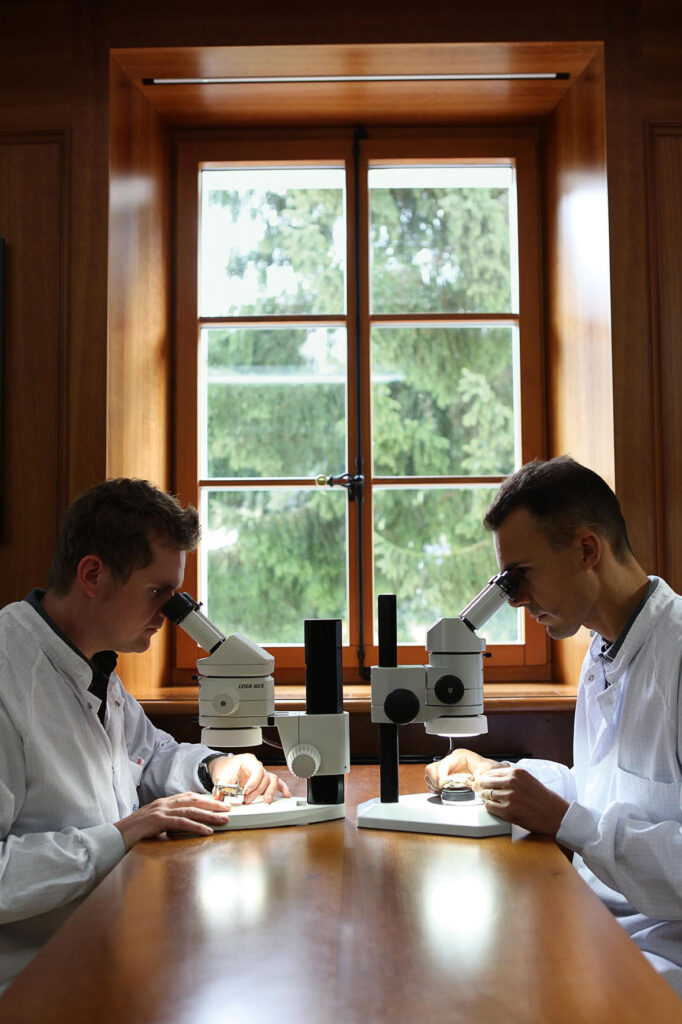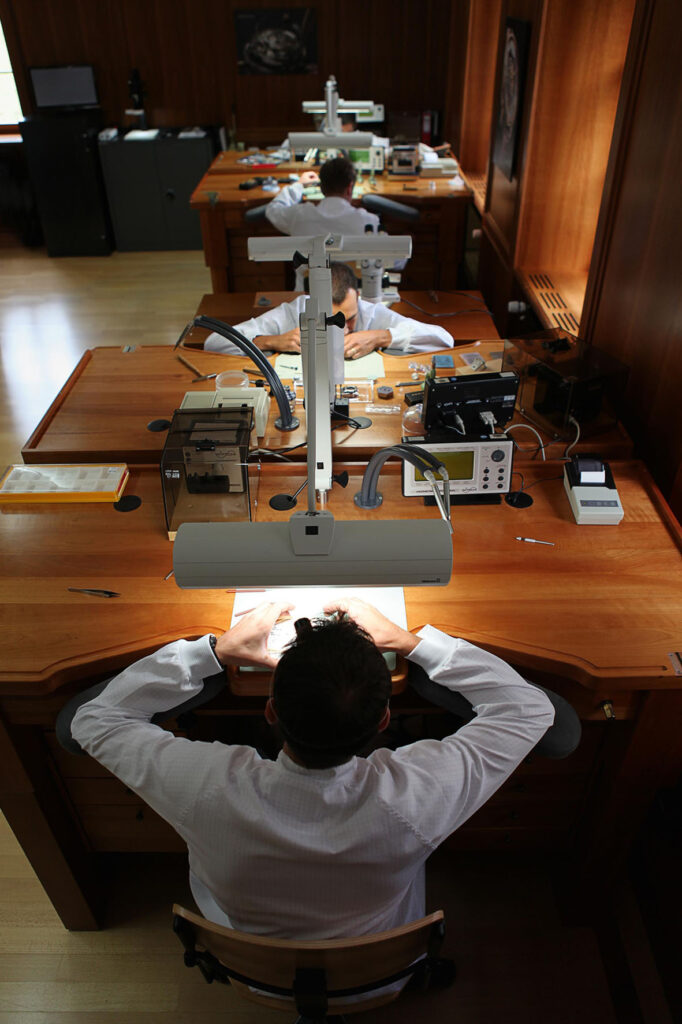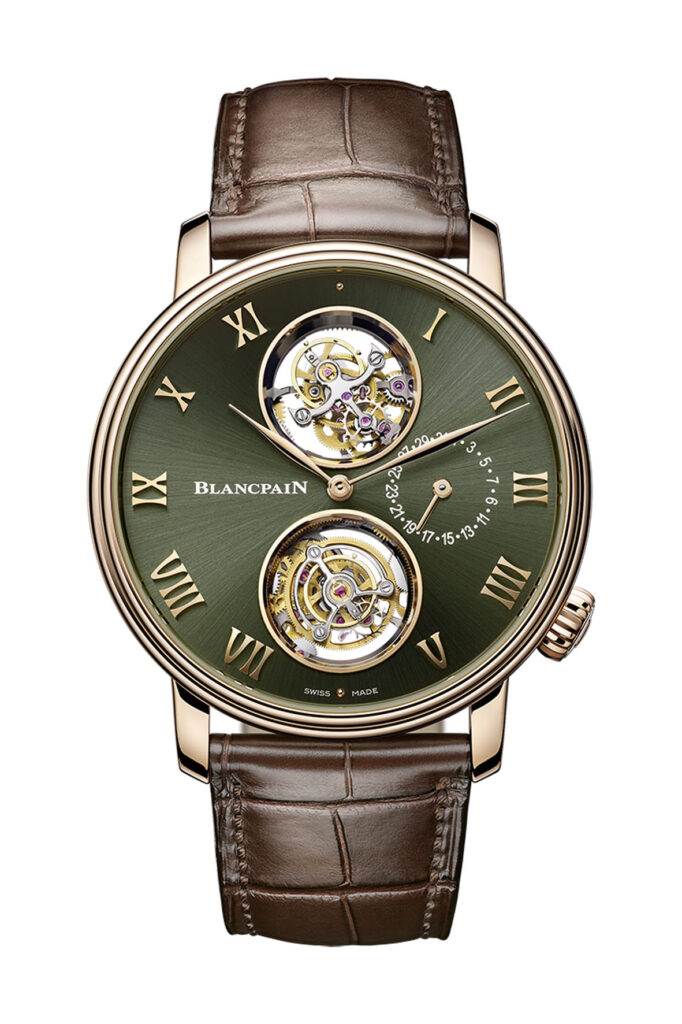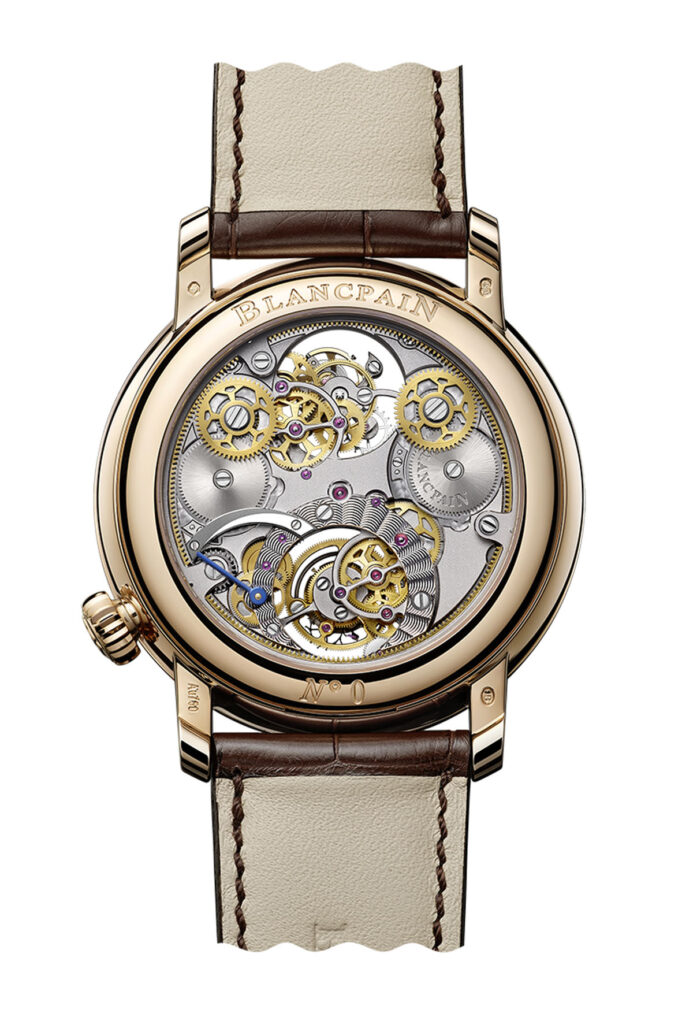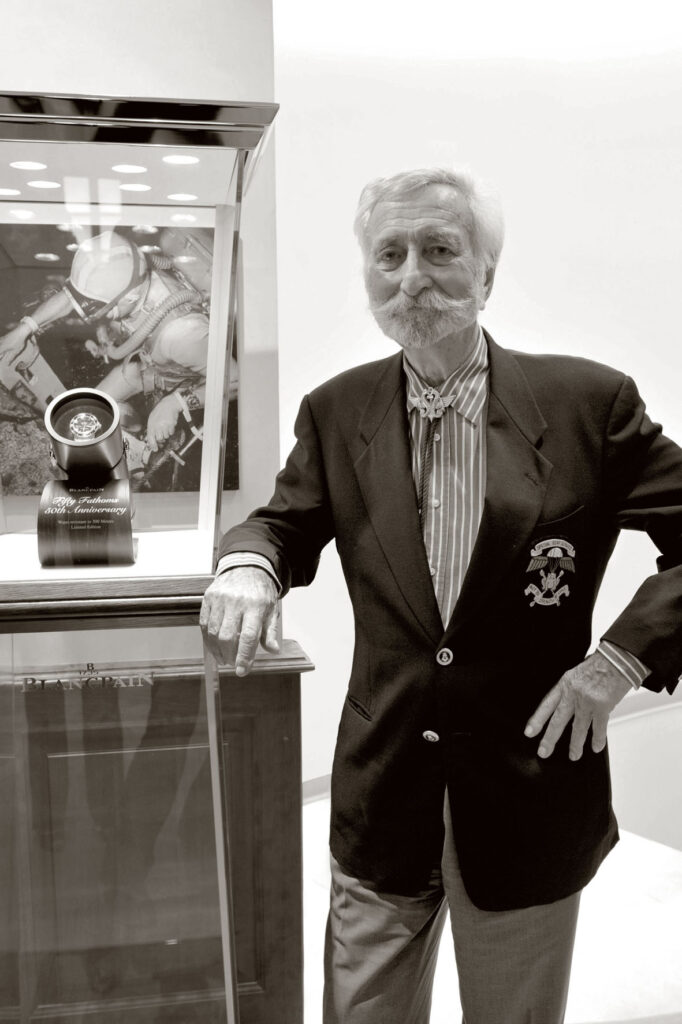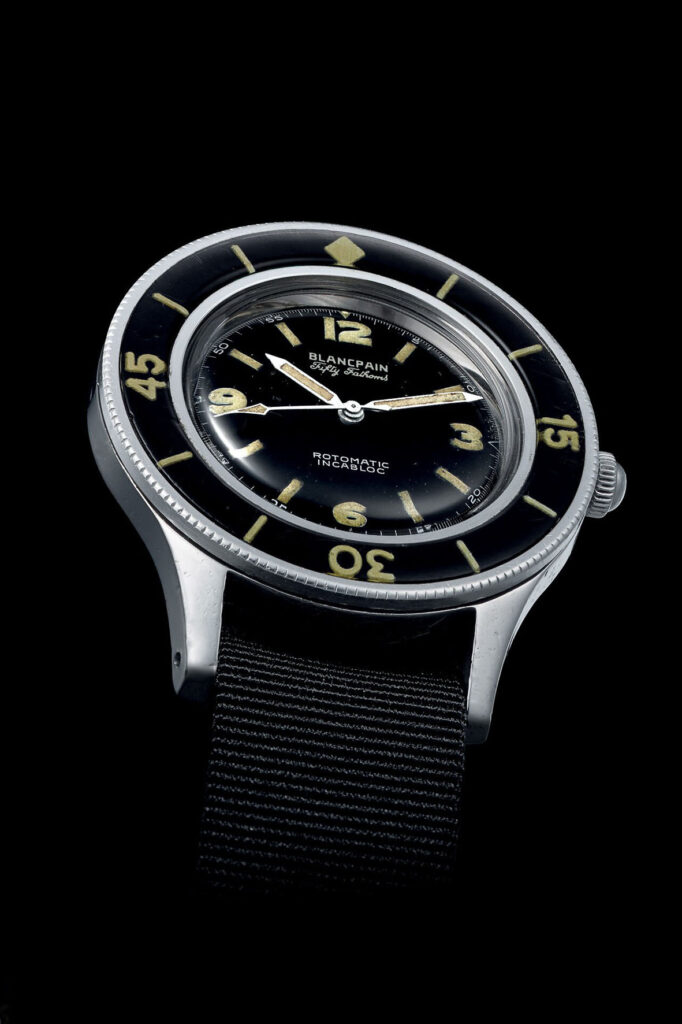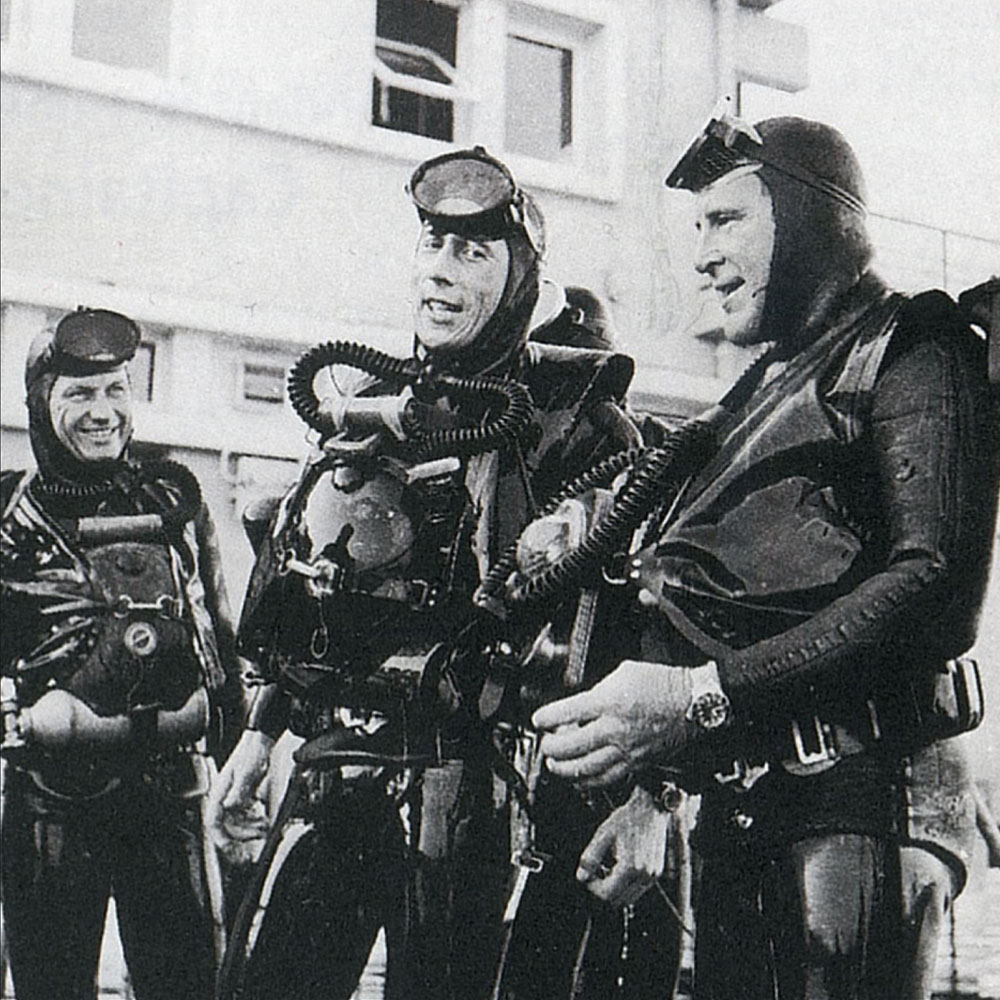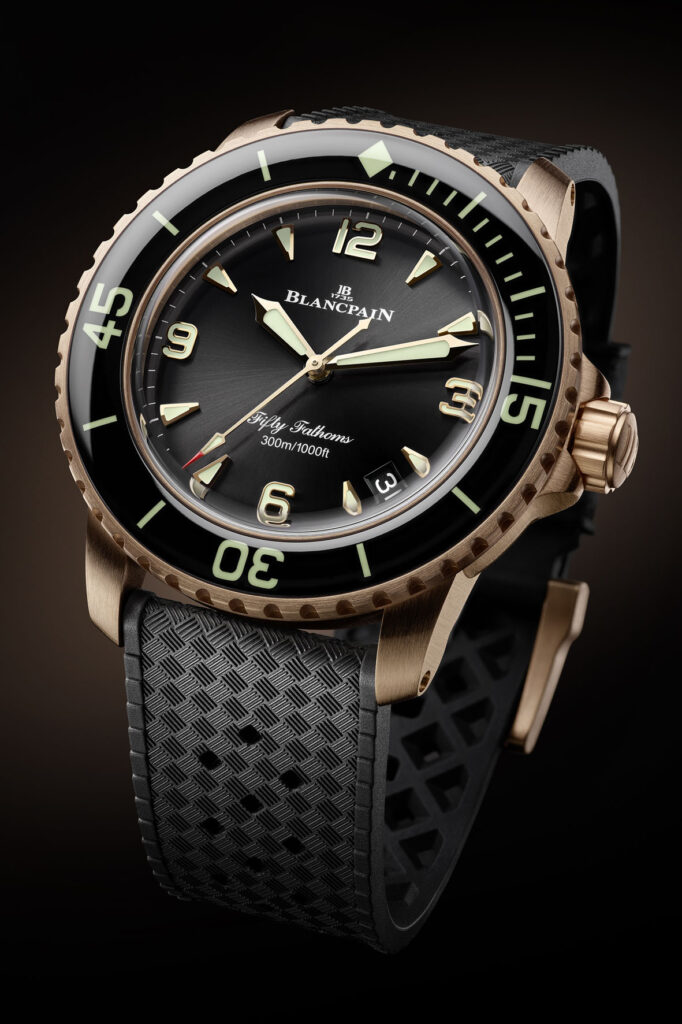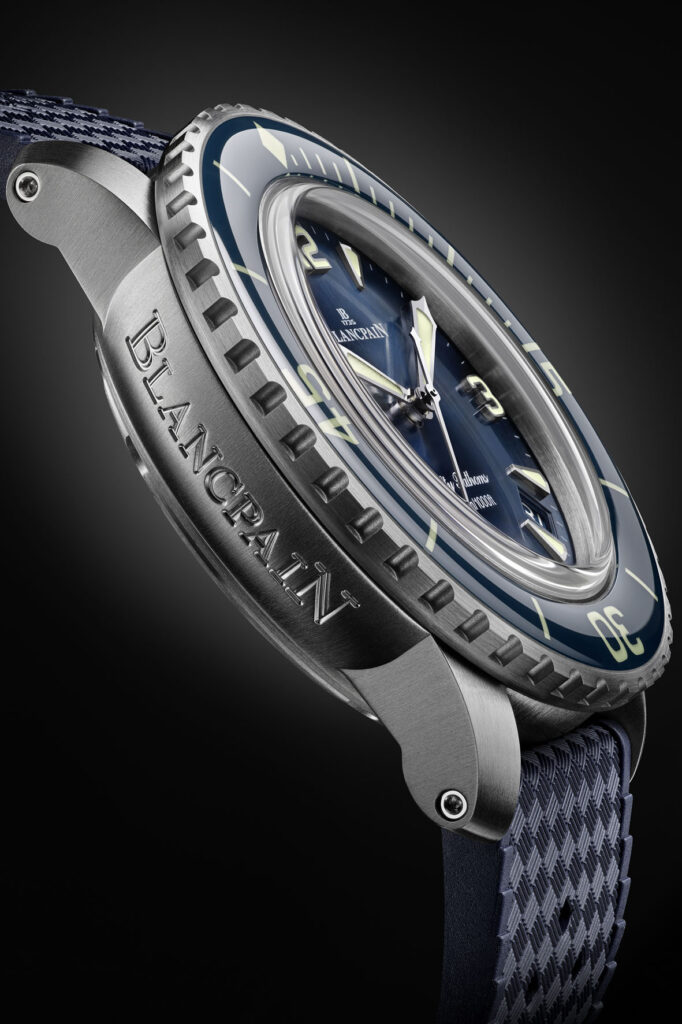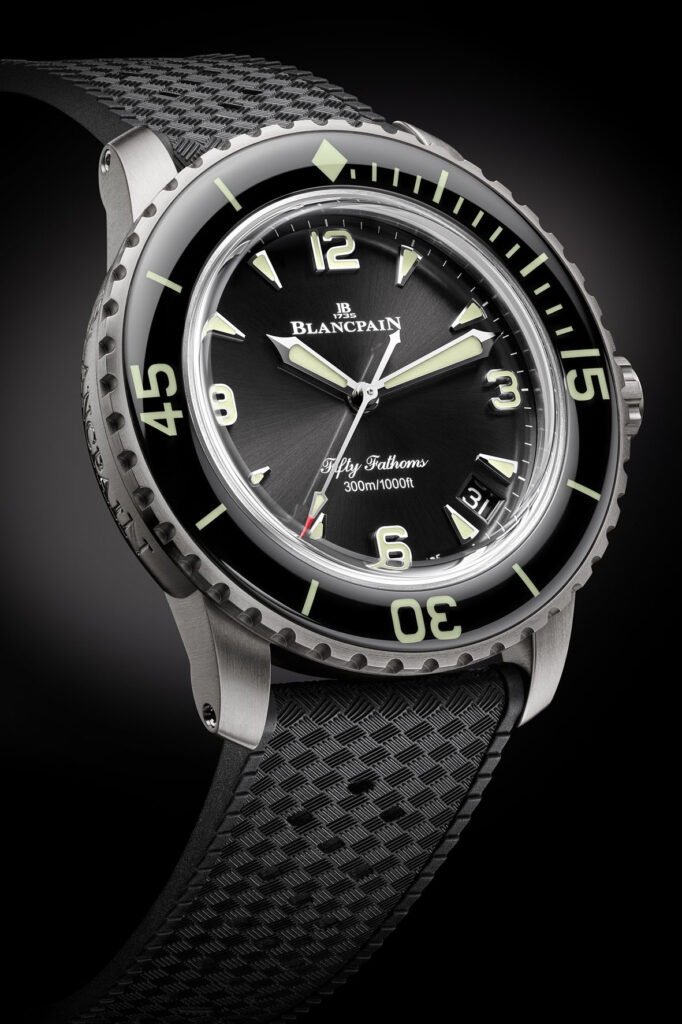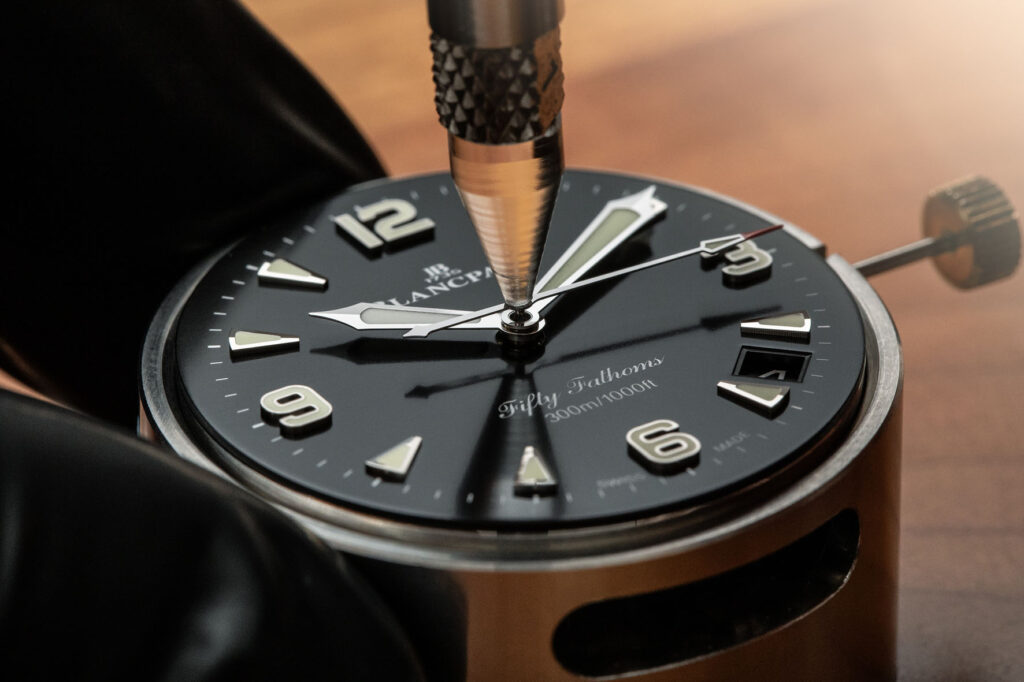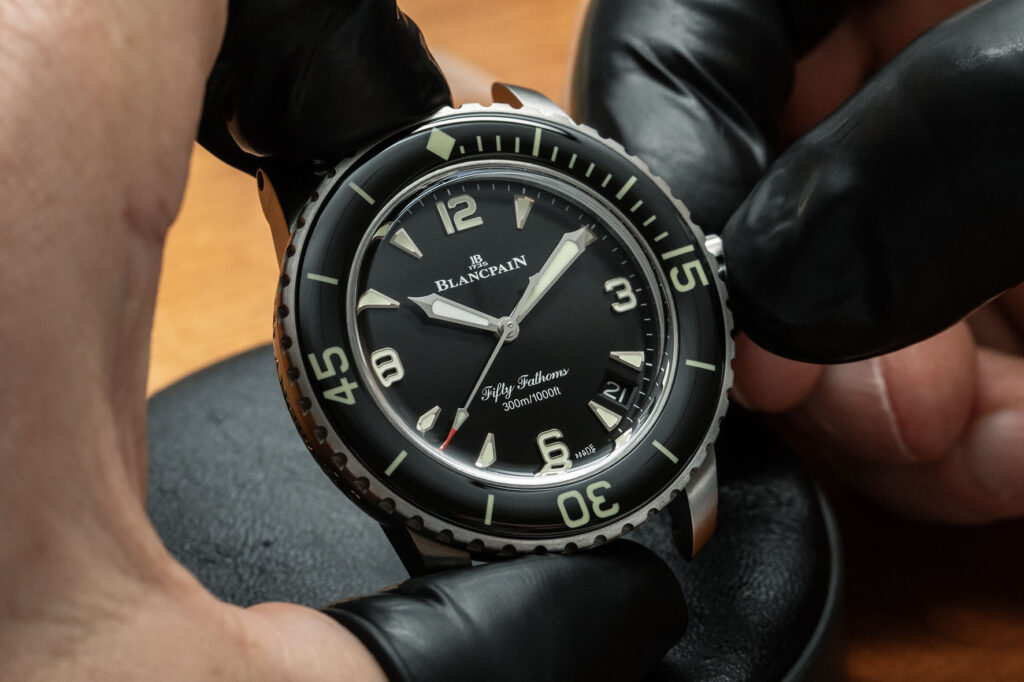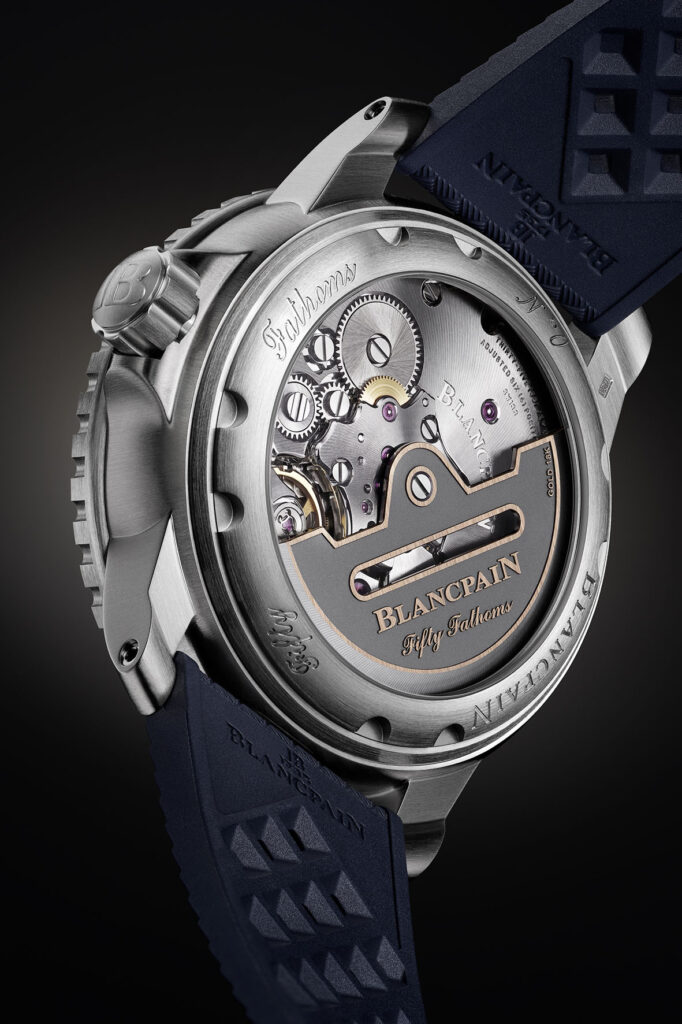Blancpain: a visit to the manufacture, and the new Fifty Fathoms Automatic 42mm
17 September 2024Not everyone has the privilege of crossing the threshold of the door of the world’s oldest watchmaking brand, Blancpain, founded in 1735. We at Watch Insanity did, as we were able to visit one of the watchmaker’s two production sites, the one in Le Brassus. It specialises in grand complications and Métiers d’Art, while the other in Le Sentier is the former Frédéric Piguet movement factory, where Blancpain’s more technical division is located. Incorporated in 2010, Frédéric Piguet specialised in the creation of fine movements; here today, watch parts are designed, developed and produced using specialised machinery.
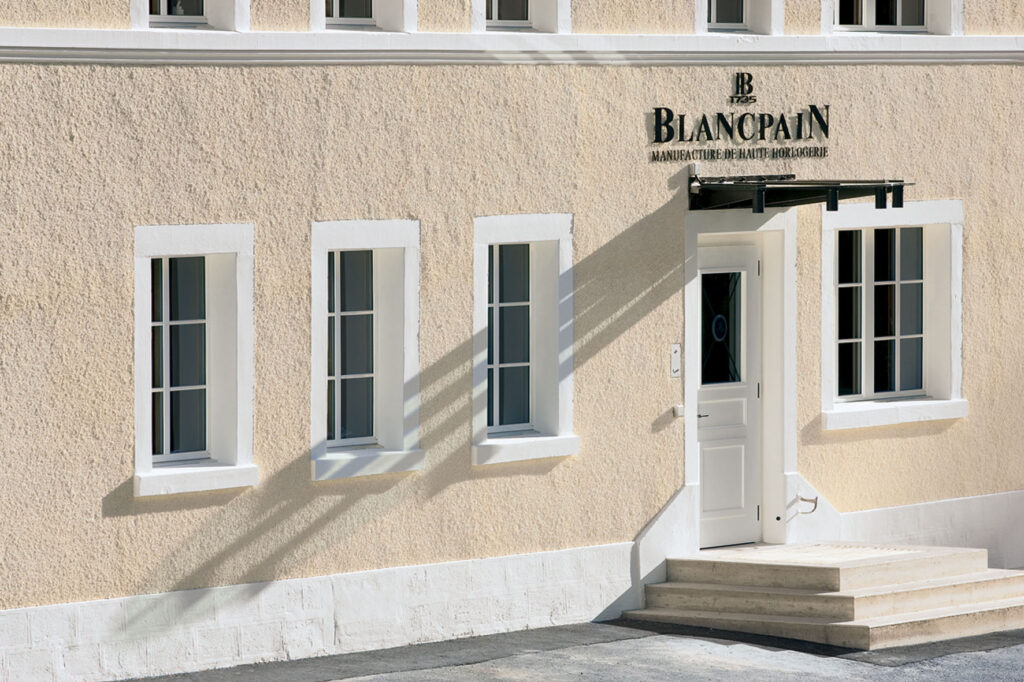
During our visit, we were once again able to touch the 2024 novelty that is the subject of this article, the new Fifty Fathoms Automatique 42 mm, which you can read more about below. But, as mentioned, the visit concerned the Le Brassus site, the so-called ‘Ferme‘. The small size of this former farm (only a few dozen people work there, as opposed to hundreds at Le Sentier) makes it an ideal place for refined workmanship. Engravings, Grand Feu enamel dials, damasquinage and shakudō, the assembly of grand complications – from the tourbillon to the carrousel, from the minute repeater to the grande sonnerie – transform the ‘Ferme’ into a place of mechanical and aesthetic marvels.

Muffled atmosphere, woodwork, silence and concentration – broken only by a few sounds. Like that of the tests on the gongs of the minute repeaters, adjusted by hand by the master watchmaker to obtain the most crystal-clear sound possible. Or that of the patient burin work of the engravers who, with the naked eye or a microscope, create miniature masterpieces destined to last.
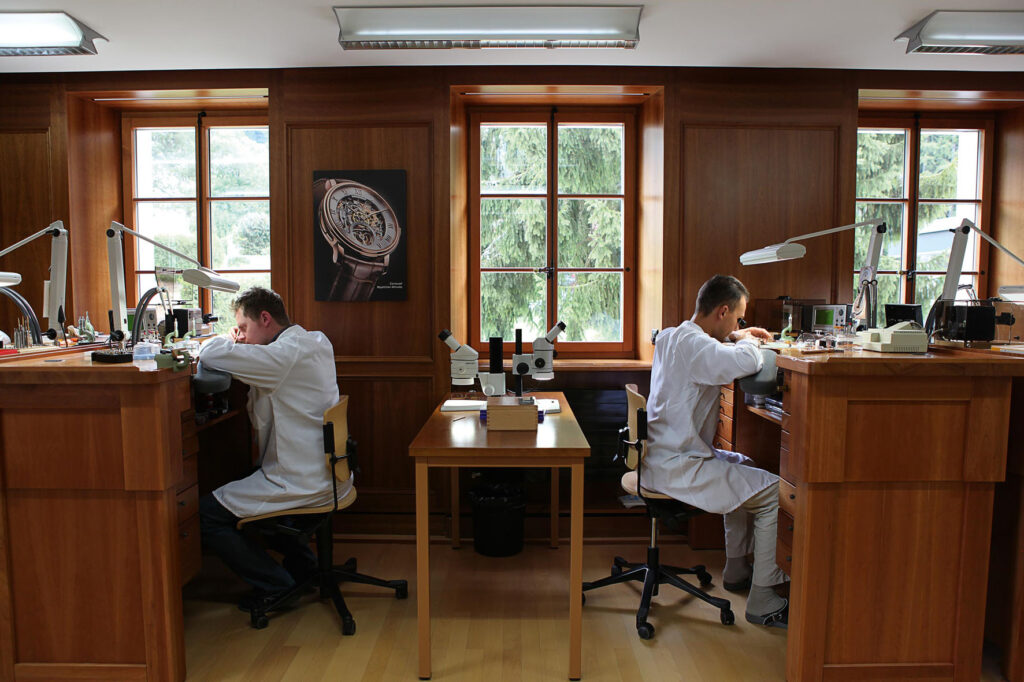
All the way to the heart of the atelier, dedicated to the tourbillon and carrousel, from which, in 2013, came the Blancpain Tourbillon Carrousel: the first watch to house the two most sophisticated complications. An almost mystical experience, which we experienced first-hand as we touched these mechanical prodigies under the watchful eye of the master watchmaker. An experience that, for a moment, led us to think that there is something ultra-human about those who work at Le Brassus. A thought dispelled by an unexpected detail: the ski lift and the small slope behind the factory where, in winter, many spend their lunch break skiing.
BRIEF HISTORY OF THE FIFTY FATHOMS
And you wouldn’t expect it, especially since thinking of Blancpain doesn’t mean thinking of snow but of the sea, of the abyss. In a few words, of its iconic watch: the Fifty Fathoms. A timepiece that celebrated its first 70 years last year, proudly bearing the pride of being the first professional diver’s watch in the history of watchmaking, created for the special forces of the French Navy in 1953.
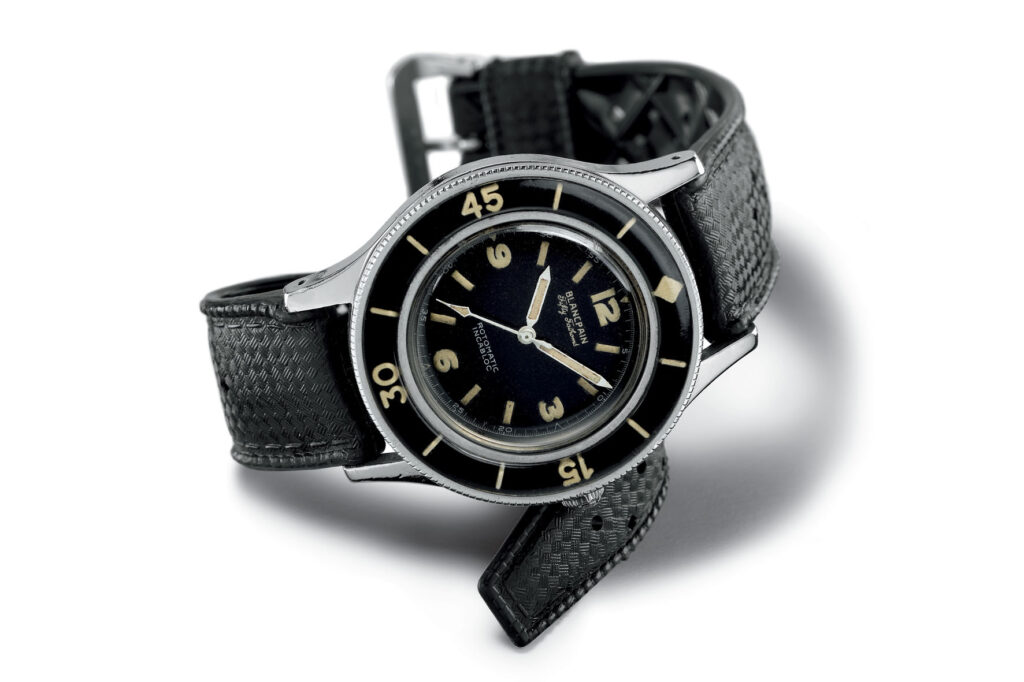
At the end of the Second World War, the French army decided to create a modern corps of combat divers, whose command was entrusted to Captain Robert ‘Bob’ Maloubier and Lieutenant Claude Riffaud. Both worked on the list of equipment needed for diving, in which a prominent place was occupied by an instrument for measuring time. Maloubier and Riffaud defined the characteristics their ideal diver’s watch should possess: large size, luminous white numerals on a black background, protection against magnetism and, of course, water resistance.
At the time, the team working on the Navy’s equipment was collaborating with Aqua Lung, the most important diving equipment supplier in France. Through their dive centre on the Côte d’Azur, one of Aqua Lung’s executives, Jean Villarem, had met Blancpain’s co-director, Jean-Jacques Fiechter, who had already created the Fifty Fathoms and was using it with his diving instructor. The name Fifty Fathoms refer to the depth of water expressed in the old Anglo-Saxon unit of measurement – equal to 91.45 metres – at which pressure the original model was watertight to almost 10 bar. Villarem put Fiechter and Riffaud in touch because that first Fifty Fathoms met the French requirements in every respect, except for one: protection against magnetism. Fiechter therefore added a soft-iron inner case to that model to protect the movement from magnetic fields. Riffaud obtained a few examples for testing, which were a complete success. Thus began a ten-year collaboration between Blancpain and the combat divers of the French Navy, and the Fifty Fathoms became the brand’s most famous watch.
Especially since 2003, when Marc Hayek, Blancpain’s CEO, reintroduced it in an updated version adapted to the changing needs of diving professionals: first and foremost, with water resistance up to 30 bar. Not only that. Hayek, a passionate diver, confirmed the bond between the Maison and the underwater world with the creation of the Blancpain Ocean Commitment: a non-profit organisation active in protecting the oceans and raising public awareness.
BLANCPAIN’S NEW FIFTY FATHOMS AUTOMATIQUE
Hayek’s relaunch further accentuated the collection’s submarine vocation, increasing the standard case size to 45 mm in 2007 and introducing the calibre 1315. A size that characterised the Fifty Fathoms as a professional watch for several years and made it suitable for important wrists. An optimal fit and the use of materials such as titanium for the case have somewhat mitigated the ‘bold’ nature of the Fifty Fathoms, but the evolution of tastes and the preference for smaller diameters that has been characterising these last few years have prompted Blancpain to carry out a major restyling of the collection, which has led to the launch of the new Fifty Fathoms Automatique. Their distinguishing feature? Precisely the reduced case diameter, down to 42.3 mm, a size the brand had already used last year in the Fifty Fathoms 70th Anniversary Act 1 limited edition, and which now enters the current collection.
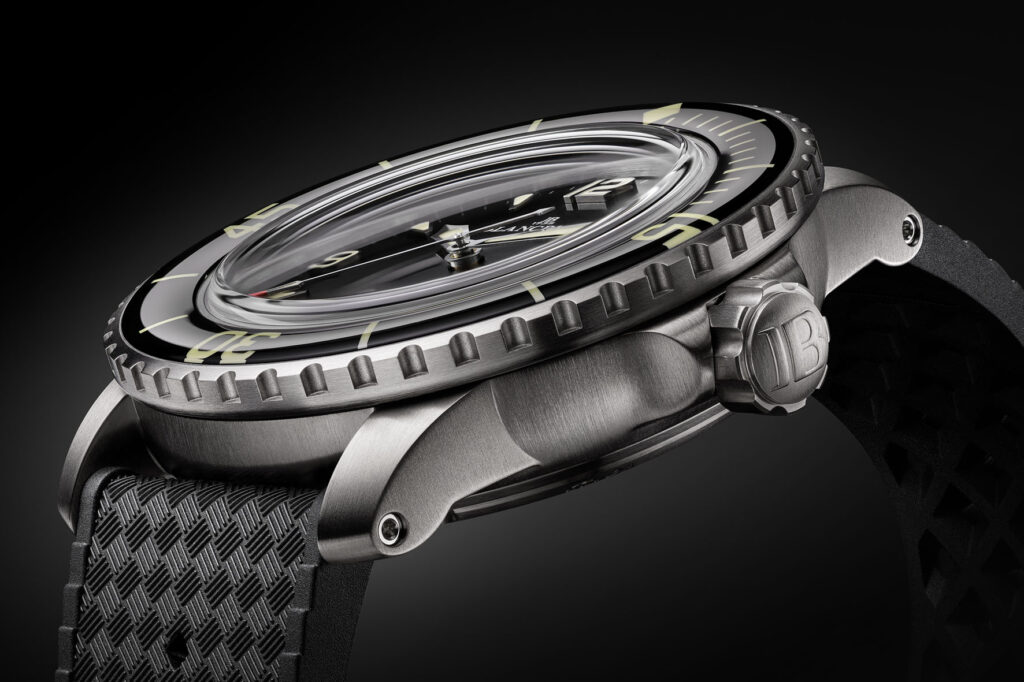
For the new Fifty Fathoms Automatique, Blancpain proposes two case materials: grade 23 titanium and red gold. Both cases feature a satin finish covering them entirely, including the lugs. The diameter is balanced by a thickness of 14.3 mm and a lug-to-lug distance of 47 mm. All numbers that indicate only two things: wearability and comfort. The unidirectional 120-shot bezel has very pronounced grooves that facilitate its use even when wearing diving gloves. Its sapphire finish, with its characteristic convexity, accentuates the impression of the watch’s overall solidity and offers more than optimal legibility.
As does the dial, in pure Fifty Fathoms style. Black or blue, it features a soleil finish and sculpted and applied hourmarkers: Arabic numerals at 3, 6, 9 and 12 o’clock and triangles for the remaining hourmarkers, in titanium or rose gold with a generous Super-Luminova covering. The latter, which is also present on the bezel, lights up the watch like a lighthouse when darkness falls, be it that of night or that of the sea depths where the Fifty Fathoms likes to dwell.
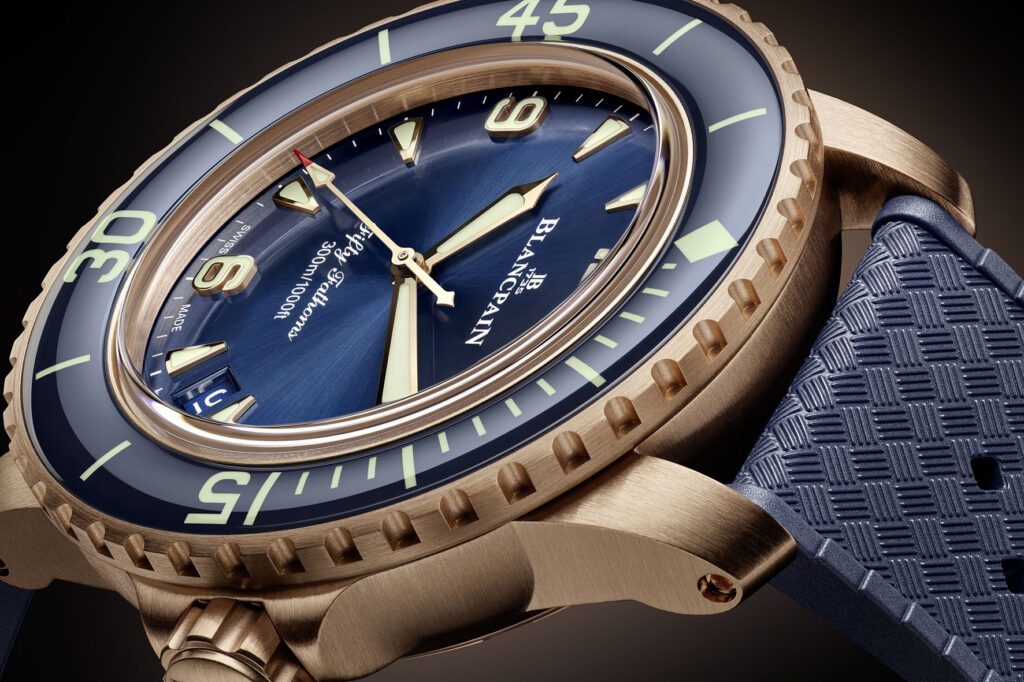
Characteristic of the Fifty Fathoms is the presence of the date display at 4:30, whose disc matches the colour of the dial. It is a position that one may or may not like, but it is part of the aesthetic and functional signature of the watch. Just as one may or may not like the through-holes on the lugs for the strap bars; in this case, those who prefer clean lines and undamaged surfaces must always remember that we are dealing with a professional, technical watch. The fact that it is also valuable and elegant should not make us forget where it comes from and what it was designed for over 70 years ago. Speaking of the strap, the two case versions of the watch are offered in an important number of variants, in blue or black to match the dial: from textured tropic rubber, inspired by the 1953 model, to sailcloth and NATO. The version with a titanium case also has a bracelet in the same material, with a folding clasp.
THE 1315 CALIBRE
The mechanical heart of the watch is the automatic calibre 1315. As written above, it was introduced in the collection in 2007 and has since become sort of a touchstone for the brand’s movements. Developed at the Le Sentier factory, it is a discreetly compact movement (30.6 mm in diameter by 5.65 mm thick) and has a non-magnetic balance spring in silicon, as is standard for Swatch Group brand movements. The concentric finish of the bridges is partly ‘obscured’ by the pierced and burnished 18-carat gold oscillating weight. The whole is visible through the sapphire crystal case back, which replaces the closed case back despite the 30-bar water-resistance to be guaranteed to the watch.
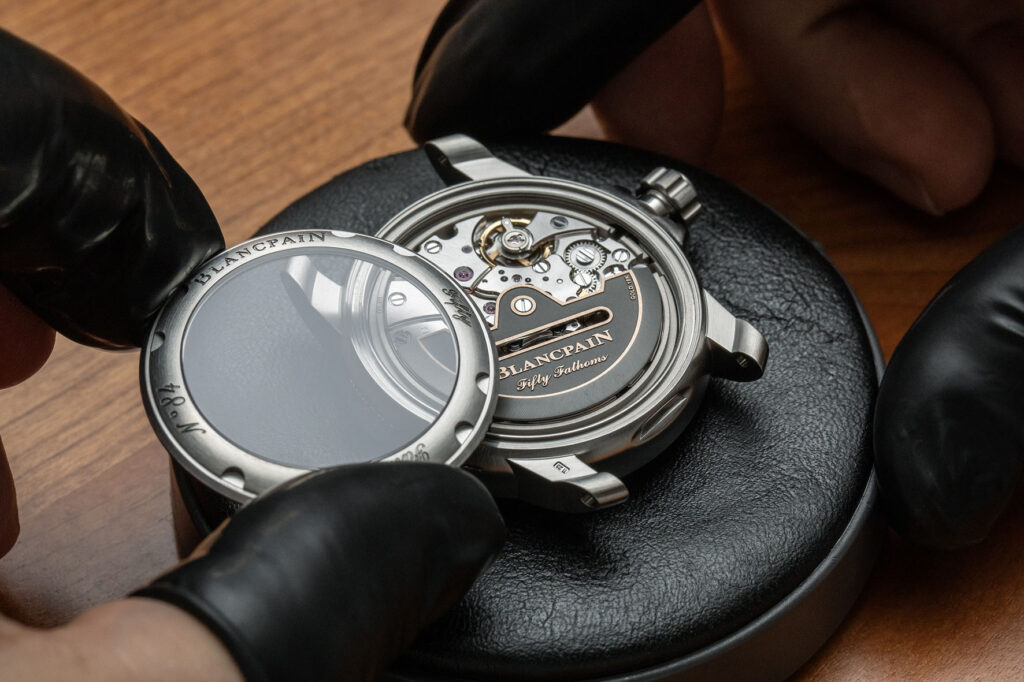
The power reserve of the 1315 calibre is impressive: 120 hours, i.e. 5 days. An autonomy made possible by the three barrels mounted in series, capable of supplying the energy required to operate despite the calibre working at 28,800 vibrations per hour. This movement now equips the entire Fifty Fathoms collection, including the references in the Bathyscaphe line.
BLANCPAIN’S STRENGTH
289 years have passed since Jehan-Jacques Blancpain realised the potential of a new activity revolving around time, watchmaking, and founded his workshop in Villeret, not far from La Chaux de Fonds. Almost three centuries during which the brand has withstood everything: wars, including two world wars (if it is true that Switzerland is a neutral country, the major watchmaking markets are not…), economic and oil crises, the quartz tsunami. And let’s stop there.

Courses and recourses, revolutions and evolutions that led the brand first to become part of the SSIH (Société Suisse pour l’Industrie Horlogère), and then of the Swatch Group. SSIH reduced its production by half and sold part of their assets: on 9 January 1983, they sold the Rayville-Blancpain name to Jacques Piguet, son of Frédéric Piguet and director of the company of the same name, and to Jean-Claude Biver, who was then working at SSIH. Turns and sharp bends in history in spite of which the brand has never drifted, and from which have emerged symbolic pieces such as the Fifty Fathoms, capable of changing to adapt to the times and fashion trends without ever changing skin. Therein lies its strength. Therein lies Blancpain’s strength.
By Davide Passoni

